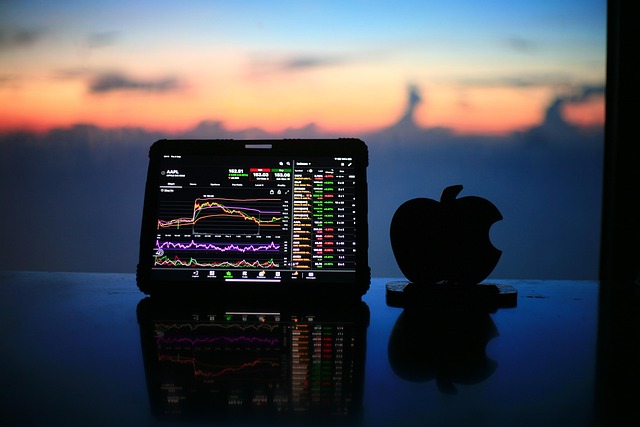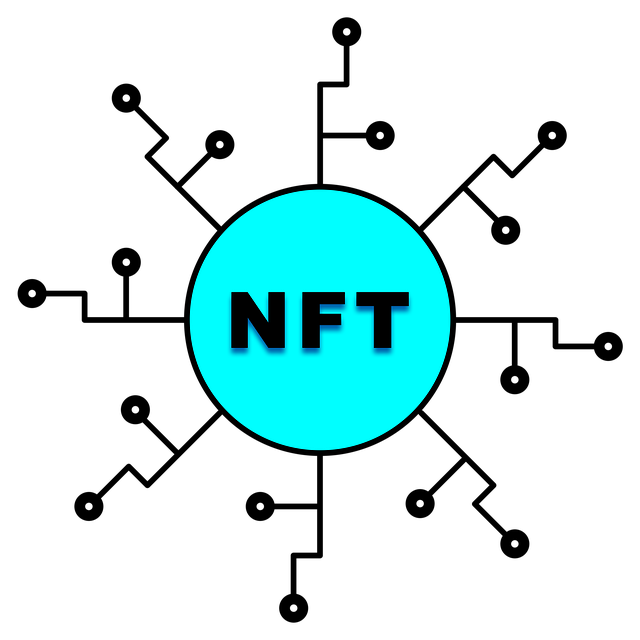Top Apps for Crypto Trading in UK 2025: Fees, Security & Practical Tips
Author: Jameson Richman Expert
Published On: 2025-11-02
Prepared by Jameson Richman and our team of experts with over a decade of experience in cryptocurrency and digital asset analysis. Learn more about us.
Apps for crypto trading in UK are increasingly sophisticated in 2025 — offering advanced order types, mobile-first charts, staking, derivatives, and integrated tax reports. This article explains the best UK-friendly trading apps, how to pick one that matches your needs, regulatory and tax obligations, security best practices, and step-by-step guidance to get started safely. You’ll also find direct links to reputable exchanges, expert guides on bots and exchange reviews, and actionable examples to trade smarter.

Why mobile and desktop apps for crypto trading in UK matter in 2025
Crypto markets are global and run 24/7. The best trading experience comes from platforms with robust mobile apps, fast order execution, and reliable desktop/ web interfaces. Whether you are a casual investor or active trader, apps help you:
- Manage positions and orders in real time
- Receive price alerts and on-chain notifications
- Use advanced charting and built-in indicators
- Deploy automation, bots and APIs for algorithmic strategies
- Access staking, lending and yield products inside a single app
Regulation, tax and legal context for UK users
Trading crypto in the UK carries regulatory and tax implications. The Financial Conduct Authority (FCA) provides guidance on cryptoasset markets and firm registration. Always confirm whether the app or exchange is compliant with UK rules before depositing funds. See the FCA’s official guidance on cryptoassets for businesses and consumers for up-to-date rules: FCA — Cryptoassets.
For tax treatment, HM Revenue & Customs (HMRC) publishes guidance on capital gains, income tax, and reporting requirements related to crypto transactions. Review HMRC’s guidance here: HMRC — Tax on Cryptoassets.
For a general background about cryptocurrencies and how they work, Wikipedia’s overview is a useful start: Cryptocurrency — Wikipedia.
What to look for in the best apps for crypto trading in UK
When assessing an app, evaluate these key factors:
- Regulatory status: FCA registration or explicit UK market support.
- Security: Cold storage for most assets, strong encryption, 2FA, device management and withdrawal whitelists.
- Fees: Maker/taker trading fees, deposit/withdrawal fees and hidden conversion costs for GBP.
- Liquidity & markets: Number of pairs and depth for the assets you want to trade.
- Order types & tools: Market, limit, stop-loss, OCO, margin/derivatives, and charting tools.
- User experience: Mobile and desktop parity, speed, reliability under load.
- Customer support: Fast, knowledgeable support and transparent dispute procedures.
- On-ramps: GBP deposit options (Faster Payments, debit card, Open Banking) and fiat pairs.

Top apps for crypto trading in UK in 2025 — in-depth platform guide
Below are leading apps that UK users commonly choose in 2025. Each entry covers strengths, fees, features, and how they fit different trader profiles.
1. Binance (global liquidity, advanced tools)
Binance offers one of the most powerful mobile and desktop trading environments with deep liquidity, derivatives, and a comprehensive suite of products (spot, margin, futures, staking). For UK users, ensure you comply with local rules and follow KYC requirements.
- Best for: Active traders, futures and margin users, advanced charting.
- Key features: Spot and derivatives, order types, Maker/Taker fees, Binance Earn, staking, P2P.
- Security: Large portion of assets in cold storage, SAFU reserve fund, 2FA required.
Read an expert review of Binance’s features and security posture: Is Binance the Best Crypto Exchange in 2025 — In-Depth Review.
If you want to register: Register on Binance.
2. Bitget (copy trading, derivative focus)
Bitget is popular with copy traders and derivatives users. Its mobile app includes social features that let new traders mirror experienced strategies.
- Best for: Traders who want copy trading and competitive derivative fees.
- Key features: Copy trading marketplace, futures, options, and margin functionality.
Sign up with this link: Join Bitget.
3. MEXC (altcoin access and lower market entry)
MEXC is known for early access to altcoins and a beginner-friendly app. It often lists new tokens more rapidly than major exchanges, which can be attractive for speculative traders — but this comes with higher risk.
- Best for: Altcoin collectors and explorers.
- Key features: Wide token selection, spot and margin, launchpad listings.
Register via this invite: Create a MEXC account.
4. Bybit (derivatives liquidity and tools)
Bybit is strong for derivatives traders and provides robust mobile and web apps with competitive fees and good liquidity.
- Best for: Professional derivatives traders and high-frequency users.
- Key features: Perpetual futures, options, margin, APIs for algos.
Sign up here: Join Bybit.
5. Coinbase / Coinbase Pro (simple UX & strong compliance)
Coinbase is favourable for UK retail users seeking easy fiat on-ramps, robust compliance, and clear tax reporting. Coinbase Pro (or Advanced Trade) adds reduced fees and more advanced charts.
- Best for: Beginners who prioritise simplicity and compliance.
- Key features: Fiat GBP support, insurance coverage, simple buy/sell, staking for selected coins.
6. Kraken (security and fiat options)
Kraken has a strong reputation for security and customer support, along with margin and futures trading. It’s often recommended for UK users who want a conservative, secure platform.
- Best for: Long-term investors and conservative traders.
- Key features: Strong security posture, staking, OTC services for large orders.
Comparing fees, spreads and GBP on-ramps
When choosing an app, compare total trading cost, not just headline fees. Consider:
- Maker/Taker fees: Lower maker fees reward liquidity providers.
- FX conversion costs: If depositing GBP, some platforms charge FX or use worse exchange rates.
- Card fees: Debit/credit deposits usually incur higher fees than bank transfers.
- Withdrawal fees: Fees vary by coin and network; compare to chain transfer costs.
Example: a UK trader using Faster Payments to deposit GBP to an exchange that supports GBP/USDT conversion often pays lower total costs than depositing with a card and converting on a high spread offering.
Security best practices for UK traders
Security is non-negotiable. Follow this checklist to protect your funds:
- Use strong, unique passwords stored in a reputable password manager.
- Enable 2FA with an authenticator app (Google Authenticator, Authy) — avoid SMS where possible.
- Use hardware wallets (Ledger, Trezor) for long-term storage of significant holdings and only keep trading capital on exchanges.
- Whitelist withdrawal addresses on exchanges that support it.
- Monitor the device and app permissions and keep software updated.
- Beware of phishing: Always verify domain names and use bookmarks for exchange logins.
For more on verifying exchanges and physical addresses to reduce fraud, read this guide: AltcoinTrader Address Verification Tips.

Using trading bots and automation safely
Automation and bots can improve execution and remove emotion, but they carry operational and security risks.
- Local vs cloud: Local bots reduce API exposure but need your own uptime and connectivity. Cloud bots are convenient but require trust in the provider.
- API key permissions: Only grant required permissions; avoid enabling Withdraw on API keys used by bots.
- Backtest thoroughly: Use historical data and forward testing in paper trading before real funds.
If you’re interested in building or running your own trading bot, this complete guide covers architecture and best practices: How to Build Your Own Trading Bot — Complete Guide. For ready-to-run bot tools and free downloads, see this resource: Binance Trading Bot Free Download 2025 Guide.
Risk management: position sizing, stop-losses and portfolio allocation
Good traders manage risk before entering trades.
- Position sizing: Limit single-trade risk to a small % of your capital (1–3% typical for active traders).
- Use stop-loss and take-profit: Place orders to cap downside and lock in gains.
- Diversify: Avoid over-concentration in highly correlated assets — keep a mix of large-cap, mid-cap and a smaller allocation to speculative altcoins.
- Leverage caution: Margin amplifies gains and losses; only use leverage if you understand liquidation mechanics.
How to open an account and start trading (step-by-step)
The steps below are typical across most reputable apps:
- Choose a platform: Pick an app that fits your priorities (fees, security, coins).
- Create an account: Register using your email or mobile number (example: Binance registration).
- Complete KYC: Upload ID and proof of address. This is required for fiat deposits and higher limits in the UK.
- Secure the account: Set a strong password, enable 2FA, add withdrawal whitelist if available.
- Deposit GBP or crypto: Use Faster Payments, Open Banking, or card (note fees differ).
- Place your first trade: Decide between market or limit order. Start small and test platform execution.
- Withdraw profits wisely: Move long-term holdings to a hardware wallet for secure storage.

Practical examples: trades, orders, and tax records
Example 1 — Spot trade to buy BTC with GBP:
- Deposit £2,000 via Faster Payments to the exchange.
- Place a limit or market buy for BTC/GBP or BTC/USDT depending on platform support.
- Record the transaction date, fiat amount and crypto amount for tax purposes.
Example 2 — Using a stop-loss on a leveraged position:
- If you open a 5x long on ETH with £500 equity, set a stop-loss that limits the capital risk to your chosen percentage (e.g., 2–3% of portfolio).
- Understand liquidation price and margin call thresholds — refer to the exchange’s documentation.
Keep detailed records of each trade for HMRC reporting. You can use built-in export tools many apps provide or third-party tax reporting software.
Special topics: fiat exchanges, bank relationships and payments
UK banks sometimes block or flag crypto-related deposits due to AML policies. To reduce friction:
- Use Faster Payments or Open Banking where supported.
- Label transfers clearly with reference numbers the exchange provides.
- Keep receipts for deposits and withdrawals to substantiate tax returns.
Ethical and religious considerations: is trading crypto halal?
Some traders in the UK evaluate crypto trading against religious frameworks. For an analysis that considers commodity trading and Islamic law perspectives, see this practical guide: Is Commodity Trading Halal in Islam — Practical Guide. That resource helps traders consider how different Islamic finance principles relate to crypto and commodity trades.

How to safely test new exchanges and apps
Before committing larger sums:
- Create an account and complete KYC with minimal funds.
- Test deposits and withdrawals with small amounts to confirm network fees and processing times.
- Test order execution under different conditions (market and limit), and observe slippage.
- Review customer support response times by opening a small support ticket.
When to use decentralised apps (DEX) vs centralised apps (CEX)
Centralised exchanges (CEX) offer convenience, fiat on-ramps, high liquidity and custodial services. Decentralised exchanges (DEX) like Uniswap or 1inch are non-custodial, often listing new tokens quickly and supporting on-chain trading directly from wallets.
Choose DEX when you need trustless swaps and custody, but expect higher slippage and on-chain gas fees. Use CEX for fiat access, margin trading, and lower slippage for large orders.
Advanced trading: derivatives, options and staking inside apps
Many apps now integrate derivatives and structured products. If you use these:
- Understand funding rates for perpetual swaps and how they affect long/short positions.
- Be aware of counterparty and platform risk with structured products.
- Staking and yield products often lock funds; check lock-up periods and APY sustainability.
For traders using derivatives and algorithmic strategies, explore the architecture of trading bots and strategies with the bot guides linked earlier: Binance Bot Guide and Build Your Own Trading Bot.

Quick recommendations: which app for which trader
- Beginner / Buy-and-hold: Coinbase, Kraken — simple UX, strong compliance.
- Active spot trader: Binance, Bitget — large selection, low fees and advanced charts.
- Derivatives trader: Bybit, Binance — deep liquidity and professional-grade tools.
- Altcoin hunter: MEXC — fast listings and wide token availability.
- Copy trading / Social: Bitget — copy marketplace for mirroring strategies.
Additional reading and expert resources
For deeper context on exchange safety and best practices, read expert reviews and community analyses. A curated set of resources from our partner site includes:
- In-depth Binance review (features & security)
- Binance trading bot guide and downloads
- How to build your own trading bot
- Verifying exchange addresses & reducing fraud risk
- Religious and ethical trading considerations
Final checklist before you trade on apps for crypto trading in UK
- Confirm platform supports GBP deposits and meets UK compliance expectations.
- Verify security: 2FA, withdrawal whitelist, cold storage claims.
- Compare total cost (fees + spreads + FX conversions).
- Start with small deposits and test withdrawals.
- Keep tax and trading records for HMRC reporting.
- Use hardware wallets for long-term holdings.

Where to sign up — convenient registration links
Below are direct sign-up links to leading platforms covered in this guide:
Closing thoughts — staying informed and safe in 2025
Apps for crypto trading in UK in 2025 offer powerful tools but also require informed choices about security, regulation and risk. Pick a platform that matches your objectives — whether that’s low cost, heavy compliance, derivatives access, or altcoin discovery — and follow the security and tax guidance described above. Test platforms with small deposits, keep core holdings offline in hardware wallets, and document trades for taxation and compliance.
For further in-depth reading on platform reviews, bot strategies and compliance issues, the linked articles in this guide provide step-by-step guides and specialist analysis: from how to verify exchange details to building your own trading bot and reviewing Binance’s place in the market. Stay disciplined, protect your keys, and trade responsibly.